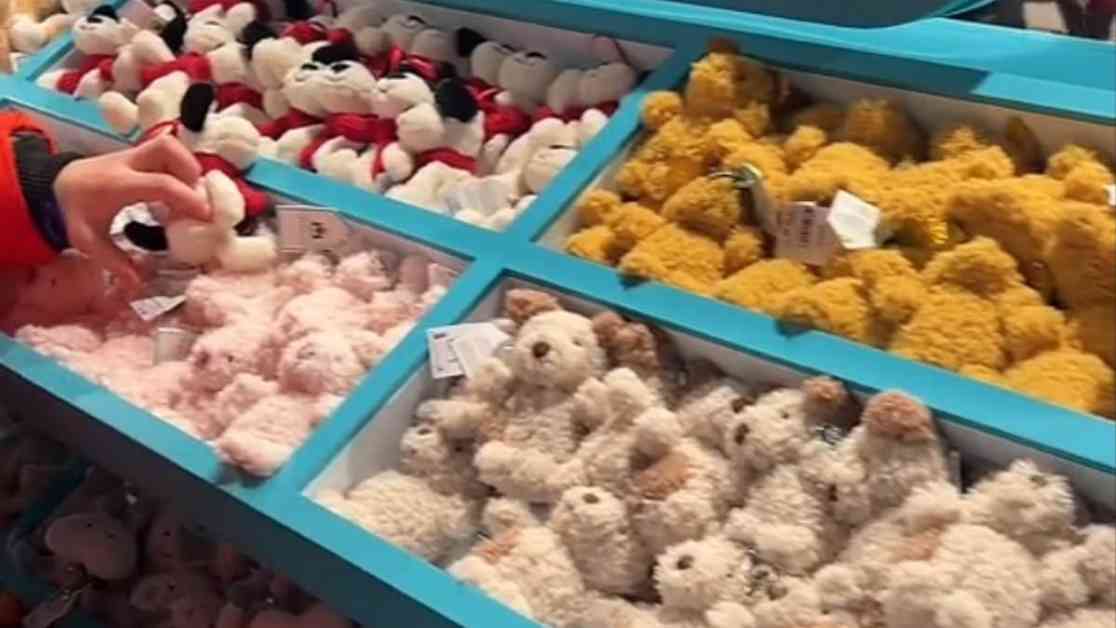Organised Jellycat Gangs: The Rising Trend of Toy Shoplifting
The surge in sales of British brand Jellycat soft toys has taken the toy industry by storm, with devoted collectors spending hefty sums to add these plush companions to their collection. However, behind the scenes, a worrying trend is emerging – organised shoplifting gangs targeting these coveted toys for resale at exorbitant prices online. The escalating popularity of Jellycat soft toys, particularly those released as limited editions or collectibles, has created a lucrative market for thieves looking to cash in on the craze.
Shoplifting Escapades: The Modus Operandi of Jellycat Thieves
Reports of shoplifting incidents involving Jellycat toys have surfaced across the nation, painting a grim picture of criminal organizations capitalizing on the toy’s high resale value. Toy shops have been forced to ramp up security measures, from installing additional CCTV cameras and security tags to implementing facial recognition software to identify potential culprits. The heightened security measures come in response to a wave of thefts targeting Jellycat toys, with incidents ranging from individual shoplifting to elaborate schemes involving entire gangs.
At Scotsdales garden centre in Great Shelford, Cambridgeshire, store manager Caroline Owen revealed that around 60 Jellycat toys were stolen during the festive period, shedding light on the scale of the issue. Similarly, Groves Nurseries in Bridport, Dorset, witnessed a brazen shoplifter using her child’s pram as a cover to swipe multiple toys from the shelves, only to resell them online at inflated prices. These incidents underscore the lengths to which criminals are willing to go to profit from the Jellycat phenomenon.
The Human Cost of Toy Theft: A Closer Look at the Perpetrators
In a shocking case, a woman from Suffolk faced the prospect of jail time after orchestrating a series of shoplifting raids that netted her £4,000 worth of Jellycat toys. Using children as a cover, the woman exploited the innocence of her young accomplices to carry out her crimes, highlighting the ruthless tactics employed by some individuals in pursuit of illicit gains. The rise of Jellycat thefts has not only affected retailers but also raised concerns about the involvement of organised crime rings orchestrating large-scale shoplifting operations.
As the demand for Jellycat toys continues to soar, retailers are grappling with the challenge of safeguarding their inventory from opportunistic thieves. The British Independent Retailers Association has sounded the alarm on the growing threat of ‘industrial-scale’ shoplifting, with an estimated three in five stolen items ending up on online resale platforms. Retailers are now resorting to drastic measures, from individually tagging each toy to keeping them locked behind glass cabinets to deter would-be thieves.
In response to the escalating crisis, law enforcement agencies are stepping up efforts to combat organised shoplifting gangs targeting Jellycat toys. Police forces like Sussex are actively monitoring and tracking these criminal networks to disrupt their operations and hold them accountable for their illicit activities. By mapping out the activities of these gangs and leveraging intelligence and data, authorities are working tirelessly to dismantle the infrastructure supporting the illicit trade in stolen toys.
Rare and discontinued Jellycat toys are commanding staggering prices on online marketplaces, with some fetching as much as £2,400. The allure of these plush companions has not only captivated collectors but also attracted the attention of unscrupulous individuals seeking to profit from the escalating demand for Jellycat toys. As retailers grapple with the fallout of rampant shoplifting, the future of the Jellycat phenomenon hangs in the balance, poised between continued success and the looming threat of organised crime.






















